[Editor’s Note: The U.S. Department of Defense’s strategic objectives for the Arctic are to ensure that it remains a secure and stable region in which U.S. national security interests are protected, the homeland is defended, and nations cooperate to address shared challenges. It recognizes that:
“The United States is an Arctic nation. The Arctic security environment has direct implications for U.S. national security interests. Geographically, the Arctic comprises the northern approaches of the United States and represents a potential vector both for attacks on the homeland and for U.S. power projection. Approaches to the Arctic Ocean to both the east and west of the United States form strategic corridors for maritime traffic. Arctic sea routes transit through the Bering Strait between the United States and Russia, while the Greenland, Iceland, United Kingdom – Norwegian (GIUK-N) gap is a strategic corridor for naval operations between the Arctic and the North Atlantic.” — The 2019 Department of Defense (DoD) Arctic Strategy, June 2019, p. 3
Today’s post by returning guest blogger Seth Gnesin explores how the Arctic is emerging as a zone of great power competition. Our near-peer competitors — China and Russia — understand the geo-strategic ramifications of global climate change and are positioning themselves to tap the region’s vast energy and mineral wealth. Mr. Gnesin examines the challenges that our Nation’s military faces in training for and sustaining operations in this harsh and unforgiving environment to defend our Arctic security interests, and makes the compelling case why it is so imperative that we do so. The stakes are high, and our adversaries are in this competition to win it — Read on!]
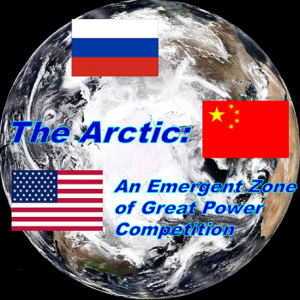 The Arctic is quickly becoming a new zone of strategic competition. Scaling U.S. Arctic operations to the point of strategic success poses significant challenges for the Soldiers, equipment, and communication infrastructure involved. Both Russia and China have staked claims to underseas territories and have expanded their operational capacities above the Arctic Circle to control the extensive untapped reserves of oil, natural gas, and rare earth minerals as well as opportunities for transpolar shipping. Controlling the Arctic, especially by maintaining a strong naval presence, is a strategic priority.
The Arctic is quickly becoming a new zone of strategic competition. Scaling U.S. Arctic operations to the point of strategic success poses significant challenges for the Soldiers, equipment, and communication infrastructure involved. Both Russia and China have staked claims to underseas territories and have expanded their operational capacities above the Arctic Circle to control the extensive untapped reserves of oil, natural gas, and rare earth minerals as well as opportunities for transpolar shipping. Controlling the Arctic, especially by maintaining a strong naval presence, is a strategic priority.
Soldiers

Due to the tilt of the Earth’s axis, the Arctic experiences about 24 hours of daylight during the summer months and about 24 hours of darkness during the winter months. These cycles are known as the midnight sun and the polar night, respectively. Each of these extreme phenomena has detrimental effects on the physiology and psychology of Soldiers stationed in the region. Sleep cycles are difficult to maintain in this environment, so sleep disorders are common. Arctic explorers also tend to display some negative psychological effects — reduced alertness, depression, and feelings of isolation and despair — likely due to heightened stress from the austere environment and conditions. These effects, which are even more prevalent in the polar winter due to the lack of Vitamin D, negatively affect group dynamics and mission success. For successful operations in the Arctic, frequent mental health screenings and acclimation training will be necessary to maintain group unity and limit polar depression.

Soldiers stationed in the Arctic also battle extreme temperatures and weather conditions. In the sub-zero temperatures of the Arctic, with wind chills dipping well below -40º, frostbite can occur on exposed skin in as little as 5 minutes. Windburn and sunburn damage exposed skin and increase the risk of other conditions like frostbite. Even with cold weather gear, hypothermia can take hold in a few hours, particularly when wind is present. Soldiers and Sailors who get wet are at an even higher risk of hypothermia, potentially falling unconscious in under 15 minutes. In the polar summer, sunlight reflecting off the ice causes photokeratitis (snow blindness) which leads to temporary vision problems, headaches, and eye pain. Cold air irritates the lungs and nasal passages, leading to difficulty breathing and even exercise-induced asthma. Cold weather also forces the cardiovascular system to work harder to pump blood, increasing heart attack risk. Finally, thick clothing and gloves can restrict movement and dexterity, making tasks harder to complete and more taxing.
Climate change adds another dangerous dynamic, especially for those at bases on the permafrost. As permafrost melts, rare, once-frozen pathogens like Anthrax and the Bubonic Plague can reanimate and infect people in the northern regions. Further, there is evidence that immune responses for people in extreme cold environments are somewhat suppressed. Soldiers stationed in the Arctic would need to be tested regularly for viruses which they would not be exposed to in other regions. Melting permafrost also releases trapped gasses, like methane, which are poisonous in sufficient concentrations. Due to worsening hunting conditions on the sea ice, Soldiers in the Arctic also face the threat of violent confrontation from polar bears migrating south in search of food. Given these regional threats, the Army will be challenged to provide unique care and medical support.
Training and Planning

Specialized survival and skills training is required for Soldiers who are deployed above the Arctic Circle. Currently, the Army has one major cold region training component, the Northern Warfare Training Center at Fort Wainwright, Alaska. There are other cold weather training courses, such as the one at Fort McCoy, Wisconsin, but the Army lacks the infrastructure to train sufficient numbers for scaled-up Arctic deployments, especially when accounting for the differences in operating on sea ice and operating in the Arctic tundra. Further, there is no additional acclimation training for Soldiers which might forestall some of the negative psychological effects from the Arctic environment. Also, although the training course imparts the necessary skills for Arctic operations, Soldiers can rarely practice and hone these skills after completing the course, decreasing overall readiness.

Interoperability with the United States’ partner nations in the Arctic will be crucial. The DoD is already involved in several biennial Joint exercises with Canada, including Arctic Edge for land operations and ICEX in support of the U.S. Navy’s Arctic Submarine Lab. The United States also participates in NATO exercises to develop cold weather interoperability, such as Cold Response in Norway. However, participating in Joint exercises only goes so far, especially when the United States only holds Arctic superiority with submarines and aerospace capabilities. The Army must also develop better homegrown Arctic capabilities based on its allies’ example.1 Denmark’s Sirius Dog Sled Patrol serves as the world’s only dogsled military unit and premier cold weather reconnaissance unit. The United States must learn from allies like Denmark and develop its own premier cold weather units by leveraging arctic-specific skills and advantages.
Materials

Extreme cold causes changes in material properties which damage equipment, degrade machine capabilities, and endanger the long-term viability of Arctic missions. Most commercial lubricants and oils gel in excessive cold, which increases the friction in an engine and accelerates damage in vehicles. Polymers and elastomers (plastics and elastics) lose some of their malleability in Arctic cold conditions, becoming rigid and brittle. Certain metals also become more brittle, making them less capable of withstanding impact and repeated use. These material property changes will require the Army to develop new, cold-resistant materials to withstand the Arctic environment or risk a loss of capabilities.
Temperature changes cause significant problems for equipment use in the Arctic, especially for equipment which is being moved between being outside and inside. Ceramics, which do not undergo obvious material changes in the extreme cold, are at risk of damage from thermal shock, wherein a frozen material shatters when quickly reheated. Condensation on frozen rifles and metal pieces moved inside leads to significant rust and corrosion, which decreases durability and consumes resources. Condensation also negatively impacts circuit boards, leading to short-circuits and impairing their operation. For effective future operations, the Army will have to develop thermally-hardened materials to prevent issues from thermal effects.
Communication and Navigation
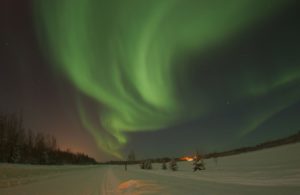
Most challenges with communication and navigation north of the Arctic Circle can be traced to poor connections with communication satellites. Primarily, northern latitudes suffer from poor broadband satellite connections because the geosynchronous orbits where communication satellites usually travel tend to be equatorial in nature. These orbits mean that satellites are usually out of range in the Arctic due to the curvature of the Earth. The aurora borealis and other irregularities in the ionosphere — the part of the upper atmosphere containing ionized electrons and plasma — can also interrupt satellite communications and disrupt sensitive electronic devices above the Arctic Circle, a phenomenon which is poorly understood by scientists. While SpaceX’s planned increase in satellite coverage might resolve the satellite range issue, communications will still be unreliable and easily disrupted by variable atmospheric conditions and heavy seas.
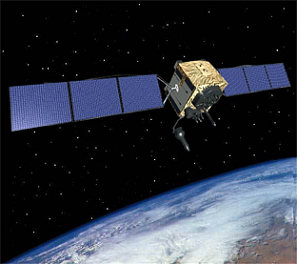 Arctic operators must also be concerned about the lack of coverage by the Global Navigation Satellite System (GNSS), which hampers GPS navigation. This comes from a similar satellite geometry problem and ionosphere challenges mentioned before, but it is amplified by the lack of augmentation and correction satellite systems (SBAS) that can reach the Arctic region. The angle of inclination of the GPS satellite orbits, coupled with the noisy communication through the ionosphere, leads to inaccurate position readings and unreliable reception. Above 81ºN (the northernmost portions of Greenland, Canada, and Russia), the SBAS satellites are totally invisible, meaning that positioning systems in the Arctic Sea do not receive correction data, making them unreliable and inaccurate. Unreliable navigation in the Arctic compromises both operational success and rescue missions for stranded Soldiers or damaged ships.
Arctic operators must also be concerned about the lack of coverage by the Global Navigation Satellite System (GNSS), which hampers GPS navigation. This comes from a similar satellite geometry problem and ionosphere challenges mentioned before, but it is amplified by the lack of augmentation and correction satellite systems (SBAS) that can reach the Arctic region. The angle of inclination of the GPS satellite orbits, coupled with the noisy communication through the ionosphere, leads to inaccurate position readings and unreliable reception. Above 81ºN (the northernmost portions of Greenland, Canada, and Russia), the SBAS satellites are totally invisible, meaning that positioning systems in the Arctic Sea do not receive correction data, making them unreliable and inaccurate. Unreliable navigation in the Arctic compromises both operational success and rescue missions for stranded Soldiers or damaged ships.
Maritime Challenges
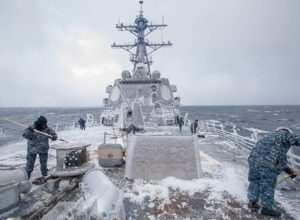
One of the biggest physical challenges for maintaining a continuous naval presence in the Arctic is ice. Both ice accretion (layers of ice building up on surfaces) and ice floes (sheets of floating sea ice) can prevent mission success. For ships, significant ice accretion on the deck can shift the center of gravity upward and negatively affect its dynamic stability. Ice accretion on the front and sides of the ship due to spray from the ocean is also problematic, as asymmetrical accretion can further affect the ship’s stability and strain the ship’s hull. Traversing ice floes adds another dynamic to ship performance; ships can be damaged by ice and get stuck, making navigation dangerous and potentially deadly. Only specially designed ships, like ice breakers, operate effectively and safely in the Arctic, meaning that a sustained naval presence is predicated on the possession of ice breakers. The United States, however, only has two operational ice breakers, both well past their initial expected retirement. Russia has at least 40 in the Arctic alone.
Sea ice could jeopardize Soldiers’ safety and the long-term mission success. Sea ice is unpredictable and can fracture without warning. Arctic weather can change abruptly, leading to devastating Arctic storms with high winds and whiteout conditions. Ship routes can be fogged over and full of ice floes, causing poor visibility and hindering radar use during rapidly changing conditions. With poor communications, troops above the Arctic Circle could lose the ability to signal distress, endangering rescue efforts. Further, meteorological reports and essential intelligence could be transmitted poorly and go unrecieved, increasing the risk of operational failure and loss of life.
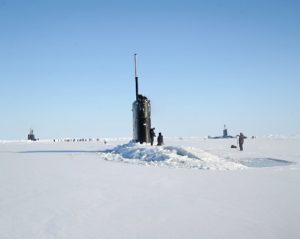
For the Navy, building a surface presence in the Arctic has taken a backseat due to a lack of infrastructural support and prioritization of capabilities in other strategic zones of interest.2 Instead, the precedent of U.S. historical supremacy with Arctic submarines has led the Navy to continue investment in under-ice submarines.3 Arctic submarines, however, have a unique set of challenges for navigation and use. Thick sea ice, while shielding submarines from reconnaissance airplanes, also prevents communication with navigation satellites and limits surfacing for positioning. Therefore, Arctic submarines can only use under-ice sonar navigation, creating global positioning challenges and requiring captains with specialized training. Arctic submarines must be hardened for surfacing through the ice, so special considerations are necessary to design the sail portion of the vessel. While the United States possesses submarines with these capabilities already, the extra requirements mean that other submarines and crews could not be deployed in the Arctic if necessary, slowing maritime buildup. Further, strictly having submarine supremacy does not provide a visible deterrence or protect future transpolar shipping, so an increased surface and even air presence will inevitably become necessary to protect U.S. interests in the future.
Impetus

The requirement that the United States overcomes the aforementioned challenges of a sustained Arctic presence is more pressing now than ever. Russia’s Northern Fleet, which operates over twenty times more icebreakers than the United States, is actively training in the Arctic, especially in the winter.4 The Russian Army performed a high-altitude precision Arctic jump, demonstrating an ability yet unseen by any other Arctic nation.5 Meanwhile, Russia’s Advanced Research Foundation is developing UAVs specifically optimized for Arctic use.  China is looking to expand their Arctic presence by adding a heavy icebreaker to complement their current fleet of two medium icebreakers. Further, China has already worked to increase its communications capabilities in the polar regions with their own polar satellites.
China is looking to expand their Arctic presence by adding a heavy icebreaker to complement their current fleet of two medium icebreakers. Further, China has already worked to increase its communications capabilities in the polar regions with their own polar satellites.  With the polar ice cap melting, it stands to reason that these efforts will only intensify and so too must the United States’ efforts. After all, lessons learned for Arctic operations could give the United States an advantage when the Antarctic Treaty expires in 2048 and that continent becomes a new contested frozen territory.
With the polar ice cap melting, it stands to reason that these efforts will only intensify and so too must the United States’ efforts. After all, lessons learned for Arctic operations could give the United States an advantage when the Antarctic Treaty expires in 2048 and that continent becomes a new contested frozen territory.
If you enjoyed this post, check out The Arctic Through 2035: An Overview of the Operational Environment and Competitor Strategies for U.S. Army Training, Doctrine, and Capabilities Development
… as well as the following related posts:
The Arctic: An Emergent Zone of Great Power Competition
Our Arctic—The World’s Pink Flamingo and Black Swan Bird Sanctuary, by Frank Prautzsch
Biostorm: A Story of Future War, by Anthony DeCapite (Note that Mr. DeCapite’s complete short story can be read here, courtesy of our colleagues at Small Wars Journal)
Special thanks belong to Mr. Troy Bouffard from the University of Alaska Fairbanks, Mr. Frank Prautzsch of Velocity Technology Partners and the team at the U.S. Army Engineering Research and Development Center’s Cold Regions Research and Engineering Laboratory for providing critical insights and advice in the development of this post.
Seth Gnesin is a junior at The College of William and Mary in Virginia, studying physics with a focus on mechanical and aerospace engineering topics. He just completed his summer internship with the Mad Scientist Initiative through the Futures and Concepts Center, U.S. Army Futures Command.
Disclaimer: All views expressed here are the author’s own and do not necessarily reflect those of the Department of Defense, Department of the Army, Army Futures Command (AFC), or Training and Doctrine Command (TRADOC).
1 Bouffard, Troy J. Telephone interview by author. July 14, 2020.
2 Troy J. Bouffard and Cameron D Carlson, “A Surface Presence for the US Navy in the Arctic?” Canadian Naval Review 15, no. 2 (2019): pp. 23-28.
3 Bouffard, Troy J. Telephone interview by author. July 14, 2020.
4 “The Northern Fleet’s Combat Training with an Arctic Focus,” OE Watch 10, no. 7 (July 2020): pp. 15-16.
5 “Russian Airborne Troops Conduct High Altitude Arctic Parachute Drop,” OE Watch 10, no. 6 (June 2020): p. 12.

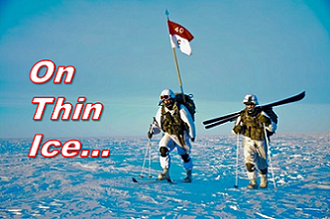


Particularly liked the emphasis on material issues and communications. The aspect of Russia having something like 47 icebreakers (at least 6 are nuclear powered with 14 more new ships planning including another nuclear-powered one), and the non-polar nation China having 3 ships with more on the production line (including a planned nuclear powered one) while the US Coast Guard has been pushing for over 15 years to simply get a new icebreaker (for reality purposes, the Polar Star is the only heavy icebreaker the US has and it has Arctic and Antarctic missions, mainly South Pole (and there is no production line for parts for it, the Polar Sea, it’s sister ship, has been a hanger queen/parts “stock” since 2010 when it broke down); while the Healy is a medium icebreaker/research ship more suited for ice breaking on the Great Lakes). At one time, the US had 7 icebreakers (4 in the Navy, 3 in the Coast Guard) but that was right after WW II (75 years ago). No plans for any nuclear powered US icebreakers as of yet.
The last administration provided an acerbic and thin Arctic Strategy in 2013 which has since been made more robust in the 2019 version (if somewhat resource thin). Yet going into 2016, there remained many issues still unresolved today (see: https://www.americanactionforum.org/research/a-weak-arctic-posture-threatens-americas-ability-to-lead/) and the “lead from behind” mentality still hasn’t been stamped out.
It didn’t help that the Obama administration cut icebreaker funding by 81% from 2013 for icebreaker acquisition. Then, in 2015, noted that instead of getting the first icebreaker in 2024 the goal was now 2020–we see the success of that with the USCG only getting a budget line for 3 icebreakers in 2019 (see: https://www.thedrive.com/the-war-zone/27647/behold-americas-new-and-desperately-needed-heavy-icebreaker). The goal is now back to 2023-2024 to have one new icebreaker out–unclear if that includes sea trials or funding for training. However, the operational life of the Polar Star is also a driver with USCG estimates it won’t be operational by 2022 best case. That means the potential for gap and that the US would be without a heavy icebreaker for 2 year minimum (if there are no delays in production and fielding of a ship the US hasn’t built since the 1970s) or worse case up to 6 years meaning all US Arctic and Antarctic missions and research stations would have to rely on foreign icebreaker support until the new ships are ready.
Further, USCG, no offense to them, has been less than successful with estimating budgets (for example the failed Deepwater effort of cutters, UAS, etc.) and their current estimate is that 3 new icebreakers will total $2.6 billion (unclear if amount that includes creating an entirely new production line for ships, parts, and training since with only one icebreaker, the MOS skill level is primarily on the job along with creative maintenance and parts fabrication). Problem is, the entire USCG annual budget is $1 billion on average and significant infrastructure and financial investment is required. The 2019 contract alone is roughly $700 million just to start things.
The other factor is how the US, which was on the rotating chair of the Arctic Council from 2015-2017, isn’t a signatory of the UNCLOS treaty (but China and 156 other nations are, see: https://hir.harvard.edu/hypocri-sea-the-united-states-failure-to-join-the-un-convention-on-the-law-of-the-sea-2/). While the US follows UNCLOS, for the most part, not being a signatory brings up interesting issues, like China being able to use the lack of signing UNCLOS as a propaganda tool against the US.
Lastly, given the US, outside of submarines, isn’t where it should be a la Russia, reviewing unmanned systems (air, surface / subsurface) needs to occur. UAS operations in the Arctic have been limited to USCG and commercial testing, for the most part. Yet when an open Northwest Passage presents itself having a force multiplier in unmanned systems would be a good thing, even if as a stop gap. I wrote a study paper on that in 2009 as part of Master’s Work and my professor provided it to the USCG Admiral of the Arctic district and one of these days I plan to turn it into an article (updated on what, if anything, has actually occurred during the last 11 years that might be different).
Scratch that, we’re down to one icebreaker: https://www.military.com/daily-news/2020/08/25/fire-scuttles-coast-guard-icebreaker-healys-arctic-deployment.html?ESRC=eb_200826.nl